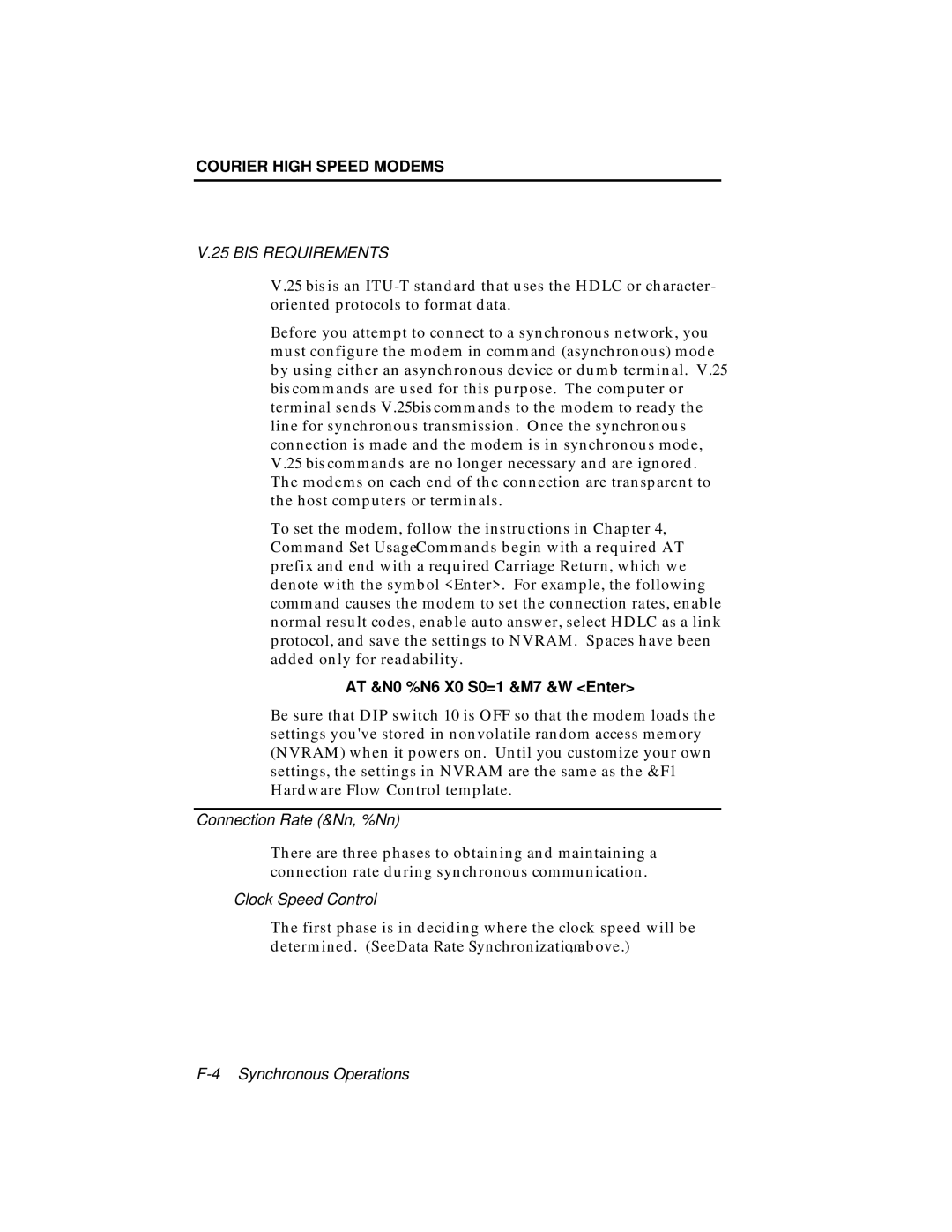
COURIER HIGH SPEED MODEMS
V.25 BIS REQUIREMENTS
V.25 bis is an
Before you attempt to connect to a synchronous network, you must configure the modem in command (asynchronous) mode by using either an asynchronous device or dumb terminal. V.25 bis commands are used for this purpose. The computer or terminal sends V.25 bis commands to the modem to ready the line for synchronous transmission. Once the synchronous connection is made and the modem is in synchronous mode, V.25 bis commands are no longer necessary and are ignored. The modems on each end of the connection are transparent to the host computers or terminals.
To set the modem, follow the instructions in Chapter 4, Command Set Usage. Commands begin with a required AT prefix and end with a required Carriage Return, which we denote with the symbol <Enter>. For example, the following command causes the modem to set the connection rates, enable normal result codes, enable auto answer, select HDLC as a link protocol, and save the settings to NVRAM. Spaces have been added only for readability.
AT &N0 %N6 X0 S0=1 &M7 &W <Enter>
Be sure that DIP switch 10 is OFF so that the modem loads the settings you've stored in nonvolatile random access memory (NVRAM) when it powers on. Until you customize your own settings, the settings in NVRAM are the same as the &F1 Hardware Flow Control template.
Connection Rate (&Nn, %Nn)
There are three phases to obtaining and maintaining a connection rate during synchronous communication.
Clock Speed Control
The first phase is in deciding where the clock speed will be determined. (See Data Rate Synchronization, above.)
